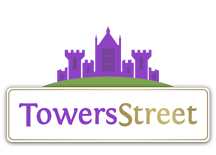flyingguitar
TS Member
but there is one, you can argue that they should have put their keys in the lockers at the start of the queue, but is it also reasonable that someone would have forgotten to do so, and thus on platform arrangements should be taken into account. in addition there are arguments that they should have added metal detectors, etc.The liability is yours, never the park's. There is an option, it's a paid locker outside the ride. If you decide to go on a ride with a loose article in your possession, which then falls and breaks (or worse, hits someone), you are liable. The park has warned you, the park has given you the option of paying for a locker to store your possessions. The park would only be liable if they encouraged you to bring on loose articles, and didn't warn you that doing so could lead to the items becoming lost, broken and doing so was at your own risk.
I wouldn't be surprised if an American park also charged a "retrieval fee" for every item which falls out and lands in a ride area.
The argument would come down to a couple factors:
Is it reasonable for the park to have known the passenger had loose articles? well the park could have installed metal detectors (such as in universal) will probably be the argument
also where is the line between park and patron's responsibility. the park knows how dangerous loose articles can be, and thus they should ensure that guests don't have loose articles, or protections exist for loose articles (netting, etc).
etc
the argument would be similar to knowing your friend doesn't have a licence but letting them drive your car, and them crashing. you were aware they wern't qualified but let them do it.
Even if they weren't liable, this is America where even if you aren't correct you can sue and win millions because it costs so much to defend against a lawsuite it is cheaper to settle, and the lawyer will go after the bigger pockets (the park).


